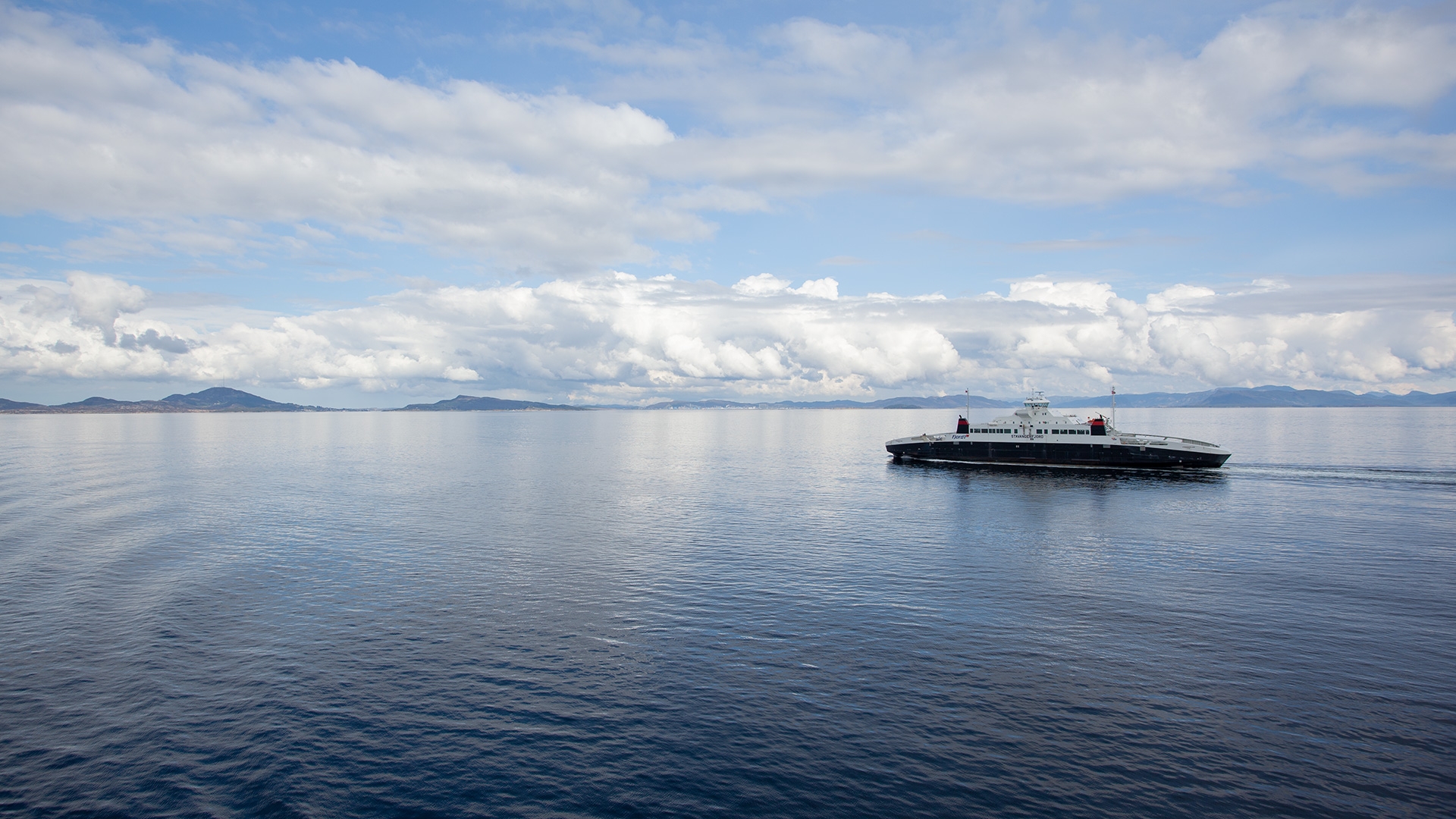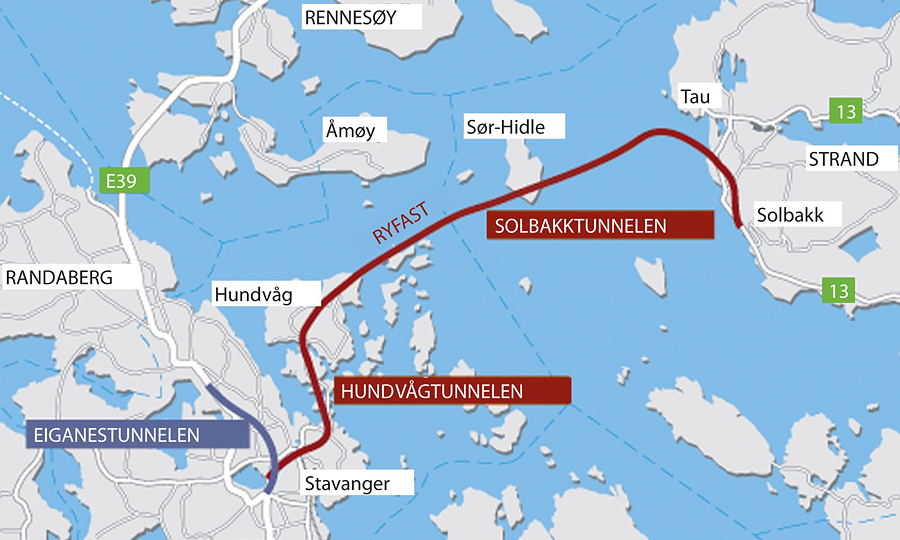Breakthrough in the longest subsea tunnel in the world

The project contains of two long subsea tunnels. The longest tunnel in the project, the Ryfylke tunnel is a 14.3 km long subsea road tunnel between Solbakk in Strand and Hundvåg in Stavanger. The Hundvag tunnel is 5.5 km subsea tunnel between Hundvåg and Gamlingen in Stavanger. Both tunnels are built with two tubes (uni directional tunnel).
Ryfast is the first road tunnel project in Norway that use conveyor belts instead of vehicles to transport the stone out of the tunnel. The initiative will ensure good air quality in the tunnel during construction and installations. Less traffic also contributes to safer passage for those working in the tunnel and a positive contribution to the reduction of the overall NOx emissions.
The construction started in 2012, and the tunnels are expected to open in 2019. The project is estimated to 10,5 billion NOK.
The total tunnel length is 52,8 km tunnel tubes. 900 workers has participated and a total of 15 000 drill and blast sequences and 4 million m3 stone has been transported from the tunnels.
The tunnels will be equipped whit the latest of safety equipment, and the tunnels has escape passages every 250 meter. Among other things the tunnels are equipped with variable traffic signs and signals, and this will in an effective way contribute to lower the consequences if an incident occur.
The Hundvag tunnel and the Eiganes tunnel will be equipped with hybrid cameras , using both thermal and visual imaging technology. The Ryfylke tunnel will be using radar detection combined with visual cameras.
The ventilation systems are designed to handle a 100 MW fire. The whole safety concept is based on to make sure that people in a safe way can evacuate the tunnel in case of fire or other incidents (self rescue principle).

Background
Ever since the mid 1970s has Ryfylke had a vision and worked for a connection to between Ryfylke and Stavanger. For a long time there was talk of crossing Høgsfjorden with submerged floating bridge.
There were no bridge solution, and after a long and time-consuming process the politicians agreed to pursue the Ryfast project as we see it today.
Photo: Arild P. Sovik
Weblinks:
http://www.vegvesen.no/Vegprosjekter/ryfast (norwegian)

 En
En 
